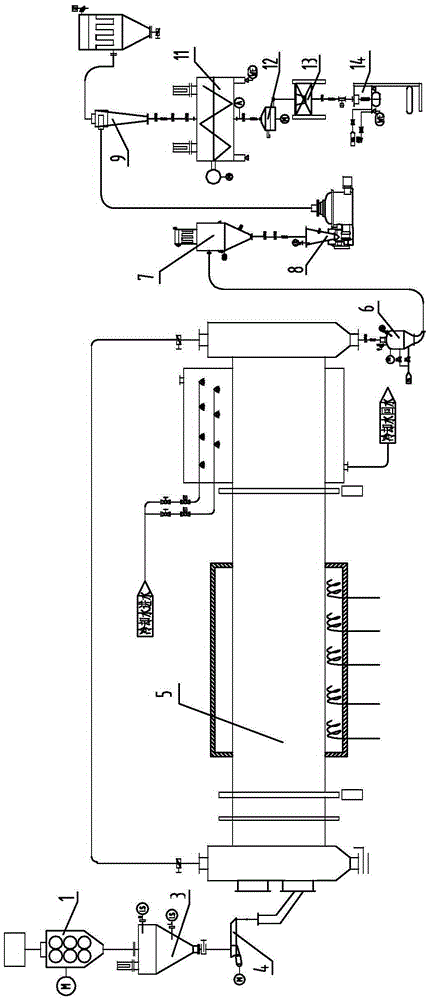Intelligent production process for lithium battery positive electrode material
A positive electrode material and intelligent production technology, applied in battery electrodes, lithium batteries, electrode manufacturing, etc., can solve problems such as uneven heating, complicated operation, and self-discharge safety of lithium batteries, so as to avoid sticking to the wall, reduce specific surface area, and improve The effect of sintering capacity
- Summary
- Abstract
- Description
- Claims
- Application Information
AI Technical Summary
Problems solved by technology
Method used
Image
Examples
Embodiment Construction
[0018] In order to make the content of the present invention easier to understand clearly, the present invention will be described in further detail below according to specific embodiments and in conjunction with the accompanying drawings.
[0019] like figure 1 As shown in the figure, an intelligent production process of lithium battery cathode material, the process steps are as follows:
[0020] 1) Automatically and accurately proportion the raw materials for the preparation of the positive electrode of the lithium battery, and then mix them;
[0021] 2) The mixed raw material enters the rolling granulator 1 for rolling, and the surface of the roller of the rolling granulator 1 is provided with an extrusion forming roller composed of semi-elliptical grooves, and the particle size is 0.1um-50um. The positive electrode material powder is rolled to form oval granules with a size of 2-5cm, and then enters the intermediate silo 3. After the material is granulated, the bulk densi...
PUM
 Login to View More
Login to View More Abstract
Description
Claims
Application Information
 Login to View More
Login to View More - R&D
- Intellectual Property
- Life Sciences
- Materials
- Tech Scout
- Unparalleled Data Quality
- Higher Quality Content
- 60% Fewer Hallucinations
Browse by: Latest US Patents, China's latest patents, Technical Efficacy Thesaurus, Application Domain, Technology Topic, Popular Technical Reports.
© 2025 PatSnap. All rights reserved.Legal|Privacy policy|Modern Slavery Act Transparency Statement|Sitemap|About US| Contact US: help@patsnap.com

